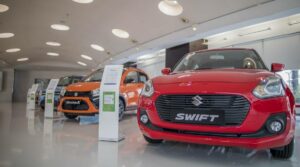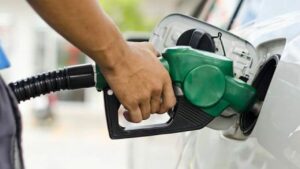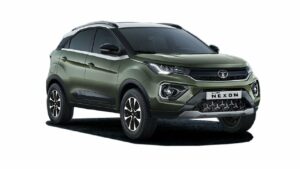RC Bhargava, the chairman of Maruti Suzuki, announced that the company does not intend to launch EVs (Electric vehicles) before 2025. It might have disappointed the green-mobility vehicle users. The company wants to focus on other clean-fuel initiatives.
However, three years ago, he had a different perspective. In 2018, CV Raman, senior executive director-engineering at Maruti Suzuki, started with 50 EV prototypes built on Wagon R for pan-India testing. The plan was to launch their first Electric vehicle in 2020.
Many questions are hovering around: Why did Maruti defer its EV plan? When will it focus on Electric cars? Why is it aiming so much on hybrids, CNG, and flex-fuel vehicles?
EVs can wait for some time
Bhargava believes that there is no use in producing products without the customers’ willingness to purchase them. The Electric vehicle has clocked little sales numbers.
The acquisition cost of a charging station is high, and the ecosystem for infrastructure has limited scope in India. Also, customers have anxiety about driving Electric cars. The battery cost is 50% of the overall vehicle cost. And the acquisition cost won’t come down unless the battery cost falls. In the USA, the ICE (Internal Combustion Engine) is approximately $9,000, and for EVs, it is $16,000.
But once the government prioritizes cleaner environments and the emission norms tighten, ICE costs will shoot up because of higher upgradation costs. EV prices will fall with lower battery and factory costs due to economies of scale.
With the green mobility aspect and lower battery costs, EV space will witness the point of inflection- for which Maruti is waiting. In 2020, the EV sales were 5,000 units. In January-October 2021, Electric Vehicle sales touched 9,900 units- Tata Motors was the market leader, with Tata Nexon locking 73.39% of the total sales.
The point of inflection will come around somewhere in 2028 and 2030. During that time, the passenger vehicle will touch 70 million in sales. However, EV will have a 10% share of the total. The Electric vehicle penetration is less even in countries where EV sales have started earlier or have good charging infrastructure.
Presently, EV is just 0.5% of the total passenger-vehicle sales in India.

Maruti’s focus on greener fuels
Maruti Suzuki holds 85% in the CNG market because it is among the few carmakers providing factory-fitted CNG vehicles. With increasing fuel prices, CNG remains in demand. It is because the price is stable under ₹50 per kg. The running cost of a CNG vehicle is ₹1.6 per km compared to ₹5 for fossil fuels. Maruti’s seven CNG vehicles account for 16.7% of the total volumes.
In 2020 Maruti Suzuki announced Mission Green Million. It aims at selling one million green cars in the next few years through hybrid, electrics, and CNG. The launch of CNG cars in 2010 and hybrid vehicles in 2015 helped the carmaker achieve one million green car sales in India over a decade.
Morgan Stanley expects India’s gas demand to grow at 10% CAGR till 2025, contributing to the energy transition to other fuel sources from the oil-dependent country.
The developments in renewables, EVs, and hydrogen is still in their initial stages, and it will take time up ramp up. In the next three tears, gas demand from transportation will grow at 23% CAGR. Imports of natural gas at 24 mtpa in 2020 will rise to 34 mtpa in 2030.
It is developing flex-fuel vehicles and will launch Celerio CNG in a few weeks.
Gasoline/CNG flex-fuel accounts for 7% of its global production volumes. This share will rise by 8-9% in the medium to long term. Maruti’s Ertiga, Alto, Wagon R have the highest production share globally.
With increasing cities covered under the CNG grid- from 146 to 293 currently, the potential share of CNG vehicles will rise shortly. The number of gas stations has also tripled in the last five years, standing at 3,323. This number will cross the 10,000 mark in a few years.

Government initiatives for EVs
In 2018, the government introduced National Policy on Biofuels for moving to a low-carbon economy and energy security. The target was to blend 20% petrol with ethanol and promote flex-fuel vehicles powered by ethanol.
Currently, Maruti Suzuki’s vehicles are E10 (have 10% ethanol and 90% petrol). Ethanol availability has been an issue since 2008. Presently, the ethanol blend has increased to 8-9% from 4.5%. Yet many cities in India lack E10 fuel. But the company aims to make the E10 available across India till April 2022. For E20, Maruti will do some calibration tweaks and change materials in fuel houses.
The company is already working to achieve the targets under the Mission Green Million- tweaking gasoline engines to make them biofuel-ready for petrol and CNG models.
Moreover, there is a reduction in the price difference between diesel and petrol. With the introduction of BS-VI norms (reduction in nitrogen oxide by 25% in petrol vehicles) acquisition of diesel vehicles has also risen.

First-mover advantage
Tata Motors has rolled out electric Nexon and Tigor. E-Tiago and E-Punch are in the works. Tata Motors plans to introduce EVs in the market by 2026. Similarly, M&M will launch 16 EVs by 2027 across light commercial vehicles and SUVs. Hyundai has Kona SUV and Kia and will launch six Electric vehicles by 2024.
But Bhargava is not afraid of losing its first-mover advantage in EVs. He thinks that the distribution is unmatched and hence can launch Electric Vehicle whenever desired. India has a small market for EVs. Maruti Suzuki is analyzing the present scenario, and it seems the late launch of EVs poses no threat to the company.
Maruti Suzuki is a brand that need not always be first. But when it enters into a particular category, it sets benchmarks. EVs have potential, but there is still time to enter the market with proper infrastructure and a varied portfolio.
Maruti Suzuki has an admirable CNG portfolio, well-positioned in the ten lakhs market.
Even flex-fuel adds to the offer. These are not alternatives but complementary to EVs. They offer the same running efficiency as a diesel car, an alternative to this category.
Maruti’s only electrification effort was MHEV (Mild Hybrid Electric Vehicle). They have a healthy footing in Europe and Asia. Moving ahead, BEVs will become the crucial electrification type. The low-cost model production will take place with Toyota. According to estimates, BEV sales will account for 10-20% of Maruti’s global sales. India’s share will be 90% of 2,00,000-3,00,000 units in the Asia-Pacific region annually.

Conclusion
To conclude, the low demand for EVs in India becomes an evident reason to defer the launch. Customers are the deciding factor. Relevant offers and complementary products also play a part in the decision. In addition, Maruti’s larger strategy is to sync its technology with Toyota’s. Hence the decision to launch EV will depend on that.
Profitability and affordability remain a question in the minds of Maruti Suzuki when it comes to Electric vehicles. The current market conditions do not favour a large sale number of Electric cars.
Also, Maruti should source batteries locally from upcoming lithium-ion battery manufacturing plants through collaboration between Toshiba Corp, Denso Corp, and Suzuki to reduce BEV costs.
Will Maruti play well in the EV space with optimal pricing? To get an answer, we need to wait till 2025.




